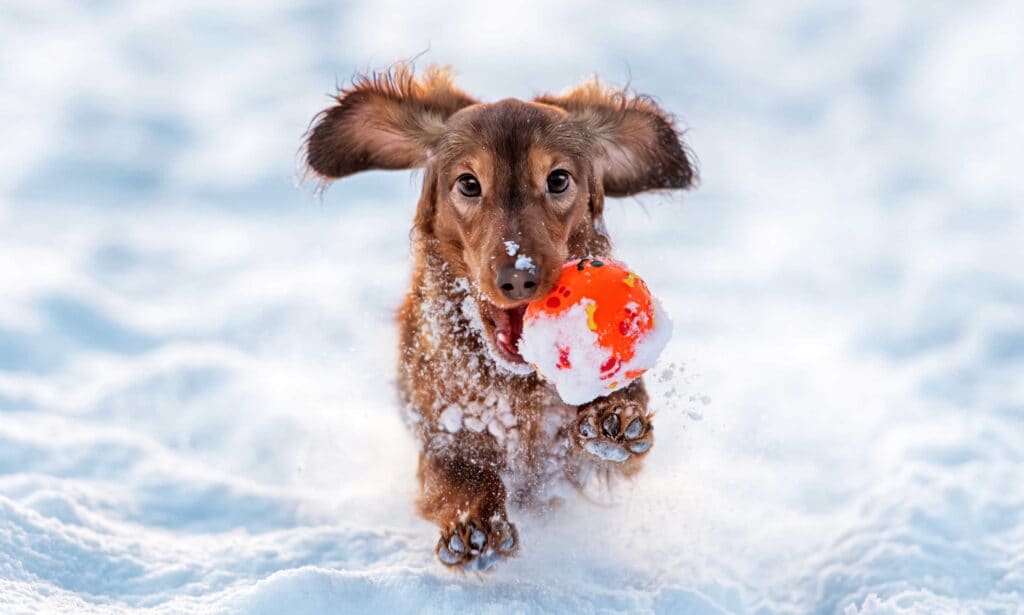Winter is in full swing and, in many parts of the country, our dogs are feeling the chill during their walks and backyard play. Our skin certainly feels the drying effects of the cold, but what about our pets?
Our furry companions need special attention, too—from the tips of their cold, wet noses to the bottom of their dog paws. Here, you’ll not only learn how to protect dog paws in winter, but also become a pro at caring for your pup’s coat and chilled nose.
How to Protect Dog Paws in Winter
Use moisturizer for cracked paws
During winter, the dry environment alone can cause cracking of a pet’s paw pads. To help avoid this, try using moisturizer for dog paws.
Several moisturizers for dog paws are available, including creams or lotions formulated to help soothe dry pads. Emollient lotions and waxes also are available and are designed specifically to help protect the tender, dry dog paws from the harsh winter elements.
Use dog booties on ice and snow
Besides the dryness of winter, there are other ways for dog paws to get hurt and damaged this season.
- Ice and snow can pack and accumulate within the paw pads, causing discomfort. Ice, salt and other chemicals commonly used to melt snow can pose big problems for pets. There are a number of pet-safe ice melt products available, though, like Safe Paw's PetSafe Ice Melt. These pet-safe de-icing products are free of salts and chlorides and typically contain ingredients such as urea or magnesium chloride, which are safer for pets.
- Even exposure to non-chemical ice and snow control, like gravel or dirt, can cause cuts, splits and irritation on already tender and cold dog paws.
For pups who are super sensitive to the outdoor elements, well-fitting dog booties might be the answer. While it might seem foreign to the dog—and funny to watch at first—dogs usually adjust to them quite quickly.
Perform daily paw checks
Unfortunately, the average pet parent may not realize there is a problem until they see their dog licking or chewing his paws. By the time pet parents notice this, the damage already may be done, meaning several trips to the veterinarian become necessary to relieve the irritation.
You can help avoid this by performing daily checks on your dog’s paws. Looking between the toes, under the pads and around the base of the toenails can alert you to any issues and allow for treatment before the situation gets any worse.
How to Protect Your Dog’s Coat in Winter
Coat care is an important aspect of keeping your pet comfortable in the cooler weather.
A freshly bathed and brushed coat will help dogs tolerate the cold weather better.
You can also consider getting a dog winter coat to protect them from the cold.
For example, moisturizing dog shampoo and conditioner can help combat the dry skin and coat, and they can cut static that can come from being outside and then entering a heated room.
How to Protect Your Dog’s Nose in Winter
Your pet’s nose also needs a little bit of attention during cold days. Some dogs—usually those with darker colored noses—can experience a slight lightening of the color. This is called a “weathered nose,” which also might appear cracked and crusty.
A dry, winter nose can be kept clean and healthy by applying a thin layer of coconut oil, Vaseline or similar product made specifically for pets each day.
Usually, the nose will return to its original darker color in the summer months.
More winter care for dogs:
Share:






















